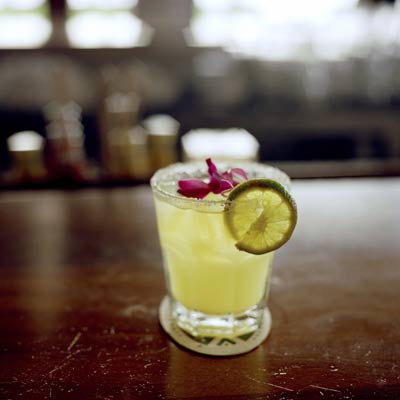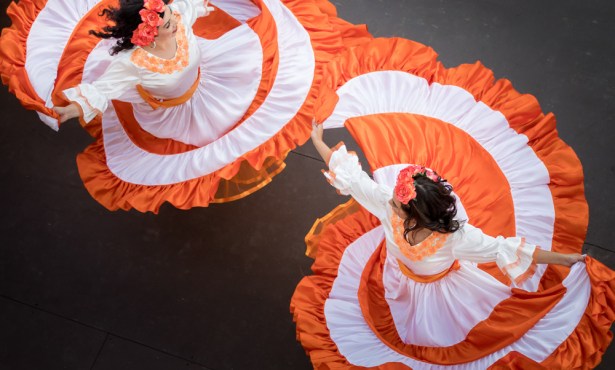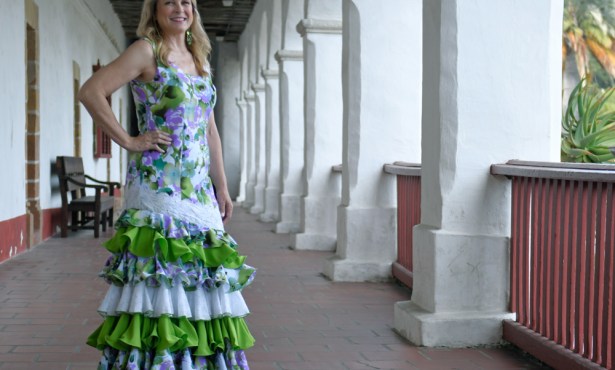A Toast to Fiesta
It Wasn't Always Margaritaville Around Here

Take away the parades, the mercados, the dancing, the music, all the pomp and circumstance, and what still remains as a Fiesta tradition? The alcohol. Nowadays, thirsts are usually quenched by leaving the packed street and heading into an even more crowded bar, but things haven’t always been that way. Back in California’s young Spanish days, South Coast citizens partied with quite a different set of intoxicating libations in contrast to the typical margarita or Corona so popular with today’s drinking set.
Understanding that Santa Barbara was an isolated outpost whose inhabitants had to grow all perishable food items themselves, it is no wonder that white wine-from grapes grown in vineyards by the Mission padres-gained the most popularity in Alta California. Employing the help of Chumash natives, grapes were placed in a cowhide basin where they were pressed underfoot, much in the same manner used today at the annual wine crush. The liquid settled into a wooden vat where it fermented for two to three months. The choice was then made of which cleaner, less pulpy juice would become the prized white wine; the thicker and lower-quality grape remnants would be distilled in copper jars to create a harder, brandy-type liquor.
Another alcoholic tradition carried out by Californios was the sweet dessert wine called Angelica. Taking their best white wine after a 10-day fermentation period, the old-school vintners would boil every gallon of wine with one pound of sugar and one quart of the brandy-type grape liquor. Placing the concoction in a charred wood barrel for six months, the result was both sweet and strong, satisfying every after-dinner party.
Every so often, government officials would send in an order to Mexico requesting various nonperishable food and drink items and other living essentials. These records have been compiled into a book edited by UCSB Professor Giorgio Perissinotto titled Documenting Everyday Life in Early Spanish California: The S.B. Presidio Memorias y Facturas, 1779-1810. Within the bilingual pages are lists upon lists of the requisitions ordered from Mexico including, every so often, certain types of alcohol, presenting hints at what Californios were drinking when they had the choice.
According to Kim Baumbaugh, former docent at the Presidio and descendent of German Cota, an early Santa Barbaran, “Most everything that was shipped from Mexico was nonperishable to withstand the journey, so most drinks were more alcoholic than the wine that the padres grew here.” And in retrospect, it makes more sense to order stronger drinks from Mexico, if even just to get more bang for your buck.
Among the recorded orders are a variety of alcohols, some outdated but even more still on sale today. The lists mention orders for barrels of white sherry, sweet Malaga and the Pedro Ximenez varieties of wine, as well as concoctions called rosoli and mistela. With so many of the soldiers and their descendents in town being Mexican, mezcal, a tequila-like alcohol derived from agave plants, was requested often, especially in times of celebration. Another festive, party-oriented liquor was aguardiente, an extra fine mixture made from sugar cane, resembling something like modern rum, and highly regarded for its quality.
The people of Spanish Santa Barbara were renowned for their parties and sought out every reason to throw a big bash. Yet alcohol didn’t rule their lives as it supposedly did in most frontier towns; early English-speaking explorers noticed that it was rare to see an intoxicated Californio, and commented that most were not particularly fond of strong drink.
Once these early parties became incorporated into Old Spanish Days, more types of liquor flowed. A 1940s menu from El Paseo restaurant offered the still-familiar Manhattan and Martini (each 55 cents) and others that were less enduring: Zombies ($1), Stingers (75 cents), and Moscow Mules (65 cents). It’s interesting that missing from the menus and early records are references to today’s drink of choice, the margarita, though tequila drinks are listed.
Gone are the days when folks drank only what they could either grow themselves or wait months for it to arrive by boat. Rejoice in the freedom of choice we have in these days of plenty, and when you taste some brandy or sweet wine, reflect on the way things used to be.



